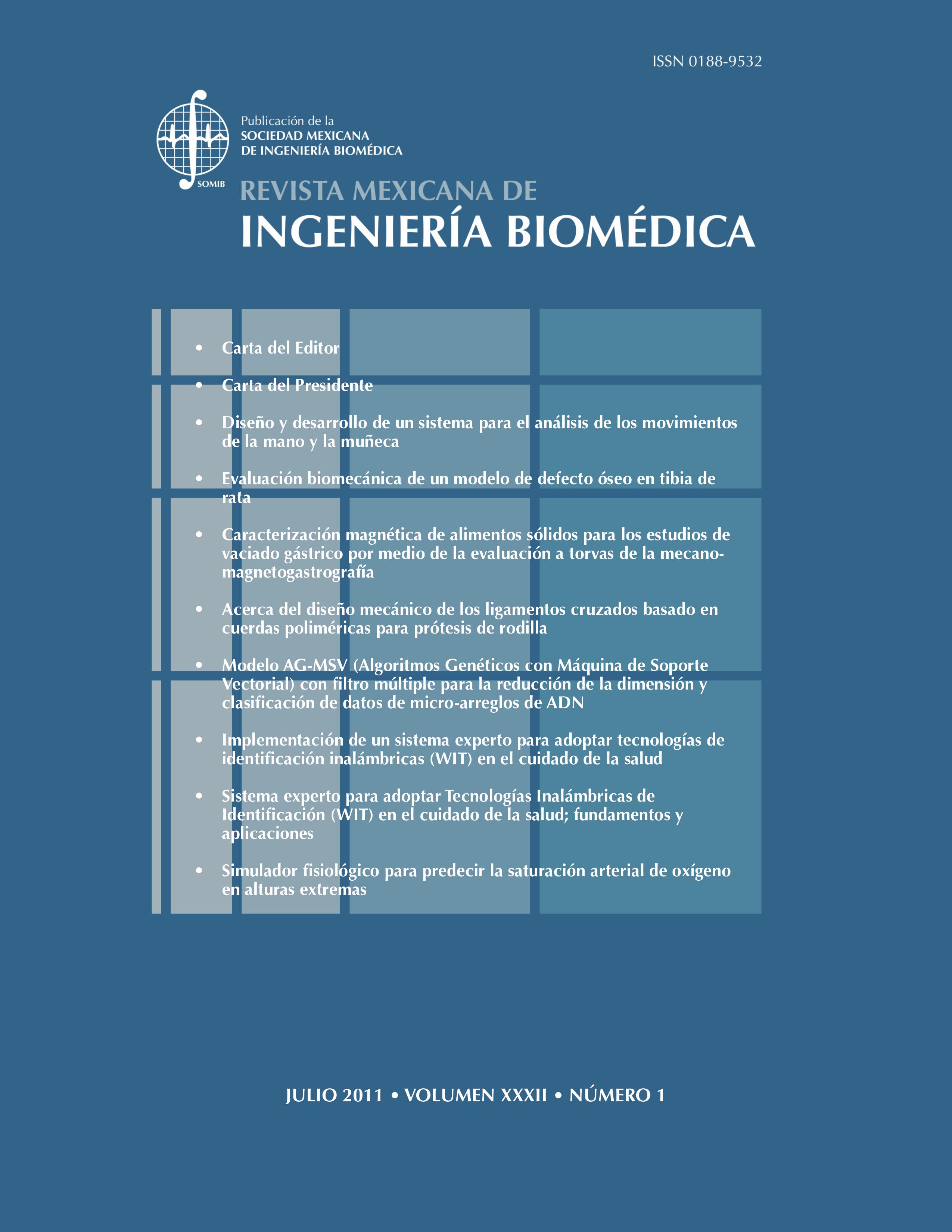Evaluación biomecánica de un modelo de defecto óseo en tibia de rata
Abstract
The study of bone defects repair is one important aspect in orthopedic and odontological surgery. Missing segments of bone from trauma, tumors, and infection can be considered of critical size (do not repair spontaneously) and of non-critical size (do repair spontaneously). The goal of this work was to assess a non-critical bone defect model, through the biomechanical analysis of the three point flexural test in the rat tibia. We studied three groups: intact (control), defect and defect left to repair spontaneously for 21 days. We found a significant difference between the control group and the bone defect group, which validates the model; furthermore, the energy at maximum load was significantly different between the control group and the spontaneous repair group, an observation that indicates that healing of the bone defect is indeed the healing process of a bone defect can be evaluated; in addition, the low cost of our model allows the study of new materials, substances and methods aimed to accelerate bone repair.
Downloads
Downloads
Published
How to Cite
Issue
Section
License
Upon acceptance of an article in the RMIB, corresponding authors will be asked to fulfill and sign the copyright and the journal publishing agreement, which will allow the RMIB authorization to publish this document in any media without limitations and without any cost. Authors may reuse parts of the paper in other documents and reproduce part or all of it for their personal use as long as a bibliographic reference is made to the RMIB. However written permission of the Publisher is required for resale or distribution outside the corresponding author institution and for all other derivative works, including compilations and translations.




